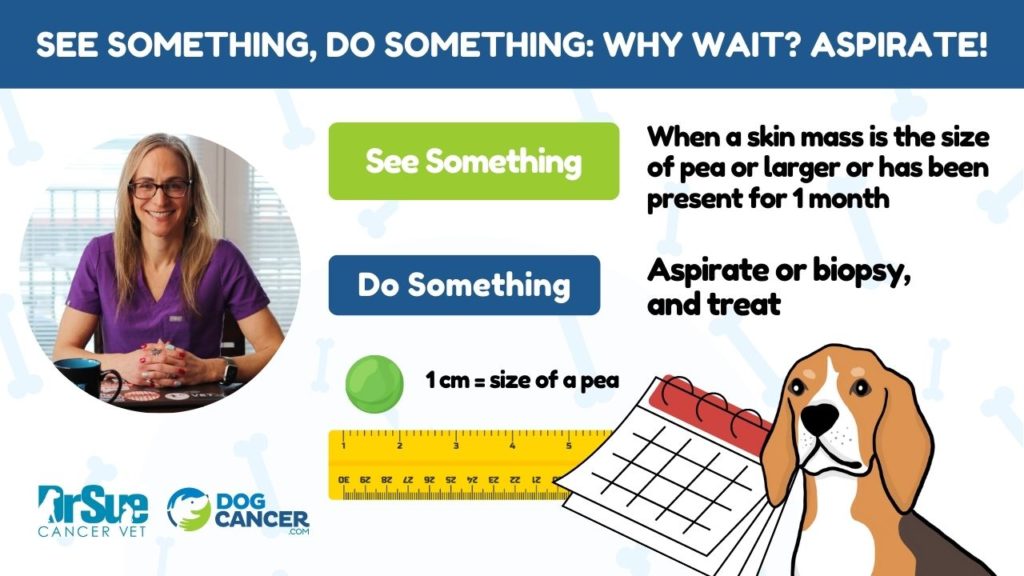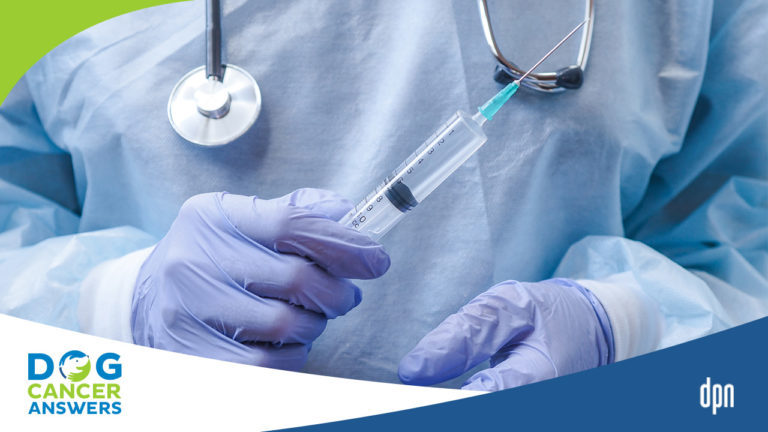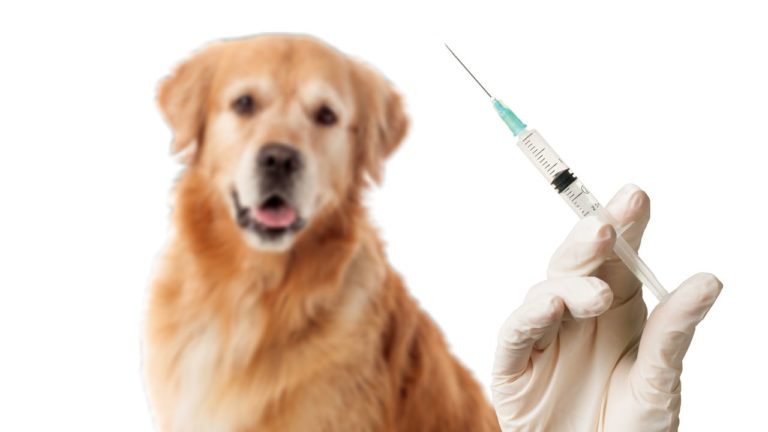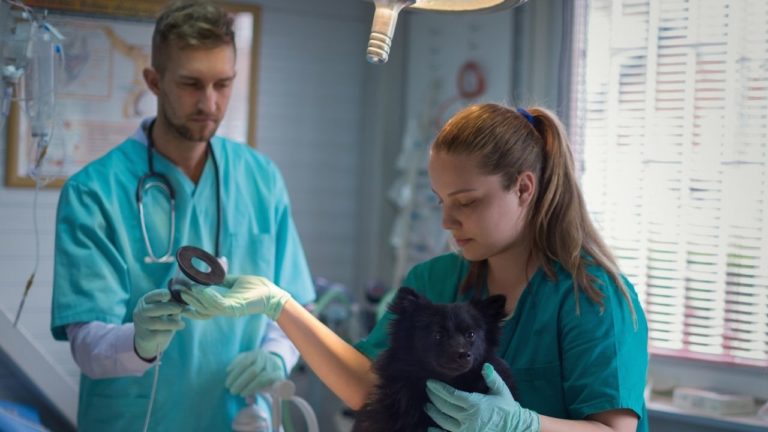When To Get a Lump Checked By A Veterinarian
Found a lump, and wondering what to do? Dr. Sue Ettinger suggests following her Rule of Ones. If it's One Centimeter or larger, or if it's been there for One Month or longer ... go see your veterinarian, ASAP. Don't "watch and wait" when it comes to the #1 killer of dogs!

Read Time: 5 minutes
When people find lumps on dogs, they often panic. It’s easy to assume the worst. And then we often avoid finding out more. But really: what should you do?
Get lumps on dogs checked by a veterinarian. ASAP.
Get lumps on dogs checked by a veterinarian. ASAP.
Most of the time the lumps are benign … but when they’re not, the longer you wait to get them checked out, the worse the situation becomes.
I want everyone to See Something Do Something.
Watch and Wait Approach?
But what should you do when your veterinarian wants to “watch and wait” or flat out refuses to test those lumps for cancer?
Best case scenario: the lumps really are “nothing to worry about” and your dog is fine, just a little lumpy.
Worst case scenario: your dog has cancer and misses a window of opportunity to get early surgery. Early surgeries are smaller (so less expensive) and, depending upon the location and cancer type, can often cure cancer.
This “watch and wait” attitude is something we’re hoping to turn around, because it’s not good for dogs, and it’s not good for dog lovers. For example, here’s a message our support team recently received:
I have an otherwise healthy labrador of 14 1/2 who has several lumps that her regular vet is unwilling to aspirate and against treating dogs for cancer entirely! I hope that they are fatty lumps as suggested but my dog keeps drawing my attention to the largest lump and has been known to indicate breast cancer in at least one human.
Well this just makes my blood boil! A vet won’t aspirate?! How can this be when early detection saves lives! Why would a veterinarian choose to not check a skin mass? Especially when the dog’s guardian believes it’s necessary?
Not even the most experienced veterinarian can look at or feel a mass and know if it is cancer or not.
We must sample lumps, and evaluate the cells under a microscope to determine what they are. There is no other way to know whether a lump is benign or malignant.
Your veterinarian must perform a fine needle aspirate and/or a biopsy to diagnose accurately. If your vet won’t do it, then find a vet who will.
How to Find and Track Bumps on Dogs
I’ve developed an excellent “skin map” for you to use for monthly head-to-toe exams. You can find it on my website.
Here’s a good video where I show you exactly what you should do every month with your own dog.
If you find a lump that is 1 centimeter (the size of a pea) or bigger, and it has been there for more than 1 month, get it checked.
Your veterinarian will almost certainly do a fine needle aspirate.
Fine Needle Aspirates for Lumps on Dogs
Aspirates are important and can help identify many types of tumors. They’re also quick, just a tiny needle inserted in the lump, and they aren’t expensive and don’t require anesthesia.
I know, it’s scary to think that the lump can be cancer.
But the sooner we determine whether a mass is cancerous and should be removed, the better for your pet. Most skin and subcutaneous (just under the skin) tumors can be cured when diagnosed early, when masses are small.
But do you really not want to know? Many dogs and cats have lumps and bumps, and not all of these masses are malignant (cancerous) tumors.
In fact, most tumors are benign (not cancer).
So if you find a lump while petting your dog, or your vet finds one during a physical exam, don’t just monitor it. If you See Something, Do Something.
See Something, Do Something
“See Something Do Something” is a set of guidelines I am developing with my colleagues at VCA Hospitals to help guardians and veterinarians figure out what to do when they find lumps on a dog’s skin, or just under the skin.
See Something: When a skin lump is the size of pea or larger or has been present for one month,
Do Something: Aspirate or biopsy, and treat appropriately.
A pea is about one centimeter, or about half the diameter of a penny. Why so small? When masses are removed early, the prognosis can be excellent, with no additional treatment needed after surgery.
But to limit the number or surgeries, we must get a diagnosis with cytology or biopsy early and before removing a tumor. This will lead to an improved outcome for your pet. A single surgical procedure can cure your pet for the majority of tumors. This is especially true for benign tumors, and some cancers that are only locally invasive (those that don’t spread or metastasize to other parts of the body).
Benign Tumors
Benign tumors may not need to be removed immediately. The location of the mass on your pet’s body should be considered. Will an increase in growth in this location prevent successful surgery? Is the mass causing pain, irritation, secondary bleeding or infection? Unless the answers to these questions are yes, you may not need to do surgery at all. Your veterinarian can help you figure this out for each benign tumor.
Malignant Tumors
But if the mass is malignant, the first surgery is your pet’s best chance for a cure. Therefore your veterinarian needs to know what the tumor is before it is removed.
What is the danger of waiting too long? Larger masses are more difficult to remove!
This is especially true for masses on the legs, head and neck area, and for smaller pets.
Over time tumors are likely to increase in size making them more challenging to remove and/or they may metastasize (spread) to internal organs. A larger mass is also more likely to need additional therapy after surgery, such as radiation therapy or chemotherapy, to prevent recurrence.
Smokey’s story
I wrote a blog about my nurse’s dog, Smokey that you should read. Smokey was an amazing white Pitty (aka Pit Bull), and I adored him. (Smokey is no longer with us, but did not die of his cancer but other medical issues later on.)
I had aspirated MANY skin masses on Smokey over the years. And the masses had always been benign fatty deposits, lipomas.
But then one day when Smokey came in for his routine lipoma check, it wasn’t a benign lipoma. This one was a malignant cancer. And the now five centimeter connective tissue cancer required a very large and complicated surgery to get the important wide and clean margins.
(The tumor was a soft tissue sarcomas. These have tentacle-like projections, so these tumors require three centimeters, more than an inch, margins around the tumor, and a tissue layer below. That is a really big surgery: for a five-centimeter tumor, the resulting scar should be at least eleven cm or about 4.5 inches.)
In hindsight, if we had aspirated this earlier when the mass was one centimeter, Smokey’s surgery would have been much smaller.
Stay Vigilant About Lumps on Dogs
So just because your dog has had multiple lipomas or other benign masses, don’t get too relaxed. Stay vigilant and have those lumps and bumps aspirated. It’s not a big deal for the dog, and it is worth knowing what you’re facing.
Remember, no one — not a vet, not an oncologist, and not you — can tell what a lump is just by feeling. And “watching and waiting” is not a good idea. Get the masses aspirated. Don’t assume it’s just another lipoma. The earlier we find tumors, the better.
With early diagnosis, less treatment will likely be required, and a smaller surgery may be curative. This means cost, a better prognosis, happier pets, and guardians too!
See Something, Do Something!
Live longer, live well,
Dr Sue
Editorial Note: This post was originally published on a retired blog about dog cancer.
Sue Ettinger, DVM, Dip. ACVIM (Oncology)
Topics
Did You Find This Helpful? Share It with Your Pack!
Use the buttons to share what you learned on social media, download a PDF, print this out, or email it to your veterinarian.




